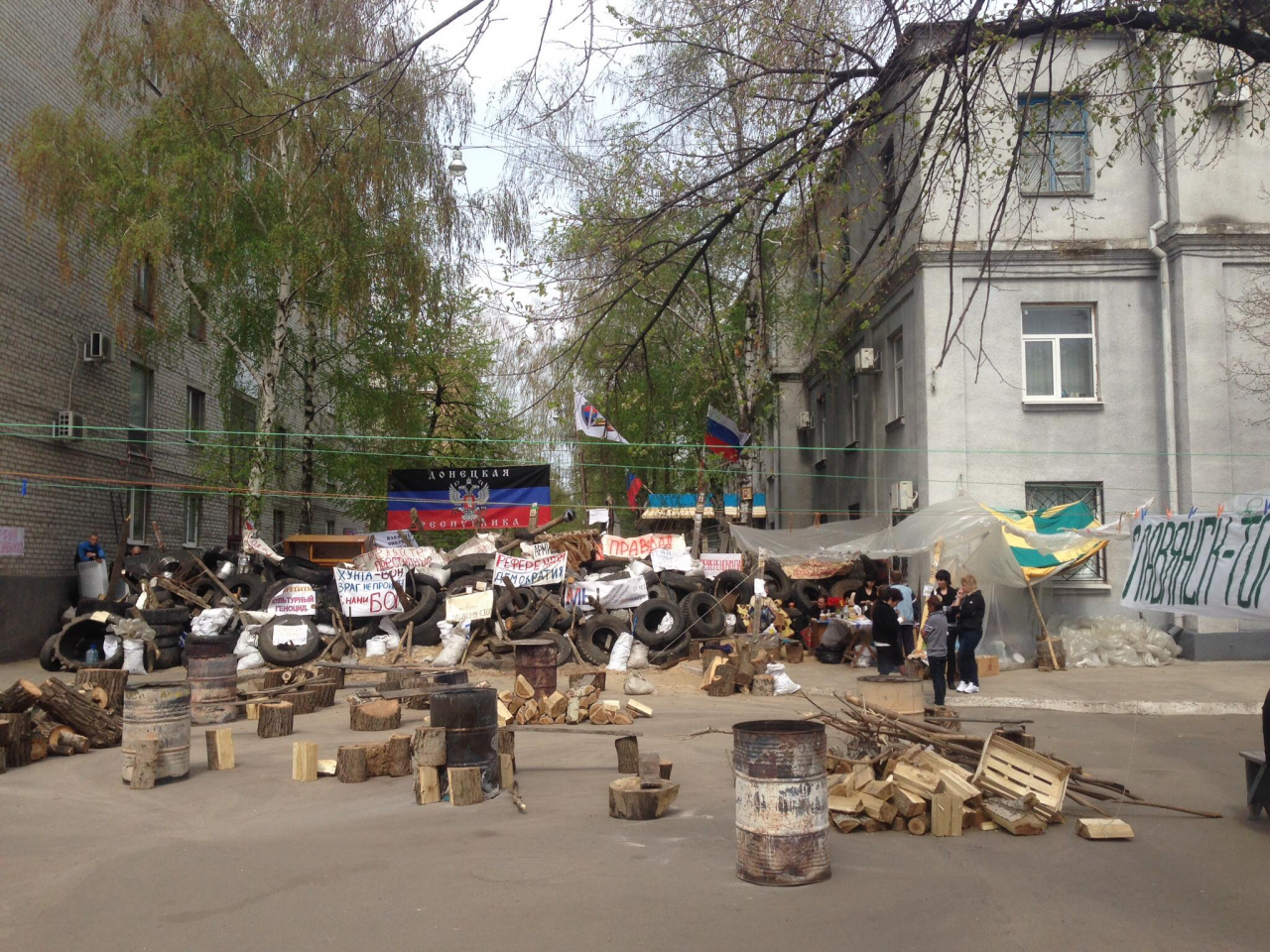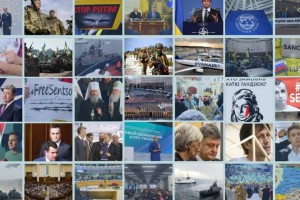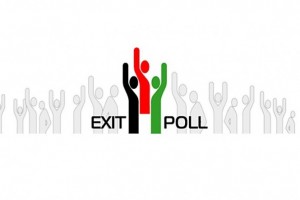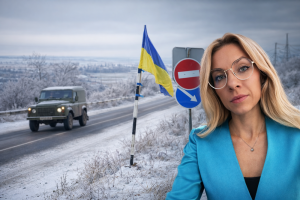Pro-Russian disinformation, local elections and the COVID-19 epidemic were the strongest factors influenced Ukrainians’ media consumption and their communications on social media networks in 2020. Detector Media conducted a large-scale study using classical media monitoring, expert interviews, big data analysis and sociological research in order to get detailed answers to several key questions: 1) who and what influenced the perception of information and the effectiveness of disinformation in Ukraine in 2020; 2) what kind of actors were trying to manipulate Ukrainian society at the national level, and in the South and East of Ukraine in particular; and 3) how Ukrainians responded to the main events and challenges of 2020. This is an analytical report on the results of that study.
DIF publishes chapter from the analytical reported which was prepared by DIF Senior Fellow Petro Burkovskyi
During the preparation of our study in eight southern and eastern regions of Ukraine, we formulated the assumption that citizens' choice of certain statements about the internal and external situation of Ukraine allows to assess the scale of the spread and influence of Russian narratives. Separately, we also surveyed the prevalence of fake and unsubstantiated allegations about the coronavirus. These phenomena in general negatively affect the ability of citizens to critically perceive new information. We assessed: 1) Russian disinformation (interpretations of events and phenomena in Ukraine in a context inordinately favourable to Russia), 2) understanding of the coronavirus, and 3) beliefs about the "external management" of Ukraine.
Thus, the questionnaire included eight pairs of statements about the situation in Ukraine, three pairs of claims– various options for "external management" and three pairs about the coronavirus. Each of them contained a disinformation message (thesis) and an opposite statement (antithesis). Not all antitheses can be considered completely objective statements, but presenting them to respondents allowed us to measure how many absolute supporters and opponents of Russian narratives are present in the southern and eastern regions and identify (if possible) the factors that may influence respondents’ choices in favour of disinformation theses or their antitheses.
At the same time, in order to avoid the situation of being forced to choose one of two statements which might not properly reflect their views, we offered respondents the option to disagree with both statements or indicate that they found it difficult to answer. Respondents could also decline to answer the question.
After receiving the results of the survey, we looked at which theses of Russian disinformation are most common in the southern and eastern regions and in which oblasts each disinformation thesis is most common. Thus, we will identify the most influential Russian narratives and the most fertile regions for their dissemination. For a more convenient perception of the seriousness of the problems, we will conditionally divide the regions into four groups: the "red" will include areas where an immediate and systematic response is needed; "orange" will include areas where the seriousness of the problems will require action in the coming year; the "yellow group" will include regions where problematic issues may destabilize the situation in the next 2-3 years; and the "green zone" will be areas in which it is best to leave the situation to be handled by local civil society.
No longer Russian narratives: Maidan, Russian entertainment and the heritage of the USSR
In all regions of Southern and Eastern Ukraine, bans on certain Russian artists and films are perceived negatively: from 52% of respondents in Kherson region to 92% of respondents in Donetsk region consider the bans to be a violation of their rights.
The next most common thesis is that Ukraine’s "decommunization policy is aimed at rewriting history and denying the achievements and feats of the Soviet era:" it is least supported in Odesa region (39%) and the strongest in Luhansk region (59%).
So, the first preliminary conclusion is that the spheres of mass culture, and historical memory are most vulnerable to Russian disinformation. Unfortunately, these are the very issues in which it is impossible to achieve rapid and critical success, especially without proper investment. Countering these narratives requires both funds and trained professionals - artists, cultural and entertainment figures, teachers and professors of humanities, researchers and entire communities of scientists.
Bans that are not followed by offers of quality content, cultural products, and the promotion of historical and cultural heritage in a way that will interest new generations cannot change the situation. At best, bans will be only formal and ignored in practice. If the bans are enforced, people will react not so much to bans on "Russian" as to the intrusive policy of the Ukrainian state, which will again and again reproduce the attitude of non-acceptance of everything Ukrainian.
Although these narratives are related to the language issue, we did not see a link between the choice of Soviet nostalgia and/or Russian entertainment and the prevalence of the narrative of "Russian language persecution" and "forced Ukrainization." Only in Donetsk region did the majority of respondents (65%) believe that "the Ukrainian government pursues a policy of ousting the Russian language from most spheres of life, even from household activity." In Odesa region, the opinion of respondents was roughly evenly divided: 42% agreed with the statement and 46% disagreed. In Zaporizhia, Mykolaiv, Kharkiv, and Kherson regions, most respondents did not believe that the Russian language was being persecuted. Only in Dnipropetrovsk and Luhansk oblast did such citizens do not form a convincing majority, as the share of “undecided” and disagree with both” respondents was quite high (26 and 35%, respectively).
However, the attitude of citizens to the 2014 Maidan is more worrying than the response to disinformation on the topic of "decommunization" and "Ukrainization". The Maidan revolution was considered by most residents in six regions to have been an "illegal coup d'etat": from 47% in Dnipropetrovsk region to 82% in Donetsk region. Only in Mykolaiv region did the majority (51% against 41%) believe the opposite, while in Kherson region opinion was roughly evenly (41% more in favour of the Maidan vs 44% more opposed).
These data should be compared with the results of the answers to two other theses; first with theses about the protests in Belarus. In Kharkiv (43%) and Zaporizhia (45%) regions - a plurality, in Donetsk region (60%) - the absolute majority believes that the 2020 protests in Belarus are "an attempt by the West to overthrow the legitimately-elected President Lukashenko”. This is exactly the kind of narrative that Russia is still spreading about Maidan in Ukraine.
In two more regions, opinion is evenly divided. In Odesa, 40% believe that the protests against Lukashenko are inspired by the West, and 36% believe that this is an "uprising of the people against Lukashenko's election fraud." The situation differs slightly in Kherson region: here, 44% consider the protests an "uprising" and 40% consider them an "attempt to overthrow Lukashenko." Only in Dnipropetrovsk (49%) and Luhansk (40%) regions do pluralities consider the protests in Belarus to be an "uprising of the people".
On the other hand, there is a Russian thesis claiming that as a result of the Maidan, power in Ukraine was seized by radical nationalists, who still control and influence the new Ukrainian president. At the same time, another disinformation thesis emerges from the more nationalist camp that President Volodymyr Zelenskyi is controlled by pro-Russian forces. In formulating the questions, we decided not to mention Zelenskyi, so that the respondents would not confuse their assessment with their attitudes towards his personality.
As a result, majorities in two regions (65% in Donetsk, 51% in Zaporizhia) agree with the thesis of the dominance of nationalists even after 2019. In three regions, the plurality of those who agree with “the dominance of nationalists” is balanced by an almost identical share who disagreed with both theses or who declined to answer: Mykolaiv (44% vs. 44% disagree/declined to answer), in Odesa (38% vs. 40%), and in Kherson (40% vs. 43%) regions.
Public opinion in Kharkiv region deserves special attention: here, the shares of people who believe that Zelensky’s government is beholden to nationalists on the one hand and Russia on the other are almost identical, with 31 and 30%, respectively. A quarter (25%) disagreed with both statements and the remaining 14% were undecided. Luhansk region is also closer to Kharkiv region, where 35% believe that the government is beholden to nationalists, but almost no respondents believed that the current Ukrainian government was beholden to Russia. On the other hand, in Luhansk and Dnipropetrovsk regions, the majority directly rejected or hesitated to choose either of the two statements.
The least successful Russian narratives were those concerning: the war in Donbas and the volunteers who fought in it. Testing of both narratives is particularly important given the threat of Russia to breach the fragile ceasefire in Donbas and the resumption of active hostilities.
There was only one region, Zaporizhia, in which a plurality (48%) of respondents believed that the war in Donbas represented a “civil war”. It was particularly interesting that in Donetsk region, 52% of respondents "selected 'disagree with both,' 'hard to say' or declined to answer." However, the answers of the majority to other questions clearly show that in this case, the respondents avoided answers that conflict with mainstream attitudes.
This is also evidenced by the opinion of 59% of respondents in Donetsk region that "Volunteers who fought in the Donbas on the side of Ukraine, mostly went to the front for benefits, profits and high salaries." This is one of Russia's narratives aimed at strengthening the thesis about the "internal" nature of war and denying the fact of aggression by Russia. Only in Zaporizhia region did a majority of respondents (41%) agree with the negative assessment of the actions and motives of volunteers.
As a result, the southern and eastern regions of Ukraine can be divided into three groups according to vulnerability to the most common Russian narratives.
Donetsk and the adjacent Zaporizhia region are in the "red zone". All Russian narratives in these regions had the support of the vast majority of respondents.
Kharkiv and Odesa regions are in the "orange zone". In the Odessa region, the narrative of the oppression of the Russian language is combined with notions of nationalist control over the government. In the Kharkiv region, Soviet nostalgia is linked to an affinity for authoritarian rule and a rejection of the Maidan.
The "yellow zone" included Luhansk, Mykolaiv and Kherson regions: in all three regions, the Maidan was considered by most respondents to have been a coup that has benefited only nationalists who want to "rewrite history." In Mykolaiv, respondents also expressed concerns about the oppression of "Russian-speakers".
The only region in the "green zone" is Dnipropetrovsk region, which is also the location of President Zelensky’s hometown of Kriviy Rih. While the level of non-acceptance of the Maidan is almost the same as in Kharkiv and Luhansk regions, attitudes towards language and memory policies are largely indifferent. The only problem is that these weaknesses continue to be exploited by the aggressor state.
Is there a connection between the "external management" narrative and myths about the coronavirus?
Another important area of Russian disinformation was the spread of messages claiming that Ukraine is governed from abroad. In August 2020, a study by Detector Media and Democratic Initiatives Foundation found that the idea that “Ukraine is governed by the IMF” was held by at least 45% of respondents.
A study conducted by Detector Media in the southern and eastern regions in November 2020 showed that various theses on "external governance" are firmly entrenched in the minds of most citizens.
In particular, 82% of respondents in Donetsk region to 45% in the Kherson region agree with the thesis that "the most important decisions in the country are made under the influence of Western countries (USA, EU)." Only in Kherson did a significant share of respondents (39%) answer that they thought that Ukraine’s governing decisions were being made independently. In Luhansk, less than one percent of respondents thought so.
Donetsk and Luhansk regions furthermore had the greatest shares of those who think that cooperation with the IMF "puts Ukraine under external governance" and the lowest shares of respondents who saw this cooperation as beneficial for Ukraine. Therefore, according to these indicators, the entire Donbas region falls into the "red zone" of vulnerability to Russian disinformation about "external governance" of the country.".
The "orange zone" includes Kharkiv and Zaporizhia regions. These two regions neighbouring Donbas had the highest share of respondents believe in the "external governance" narrative (54% and 57%, respectively) and in the harmfulness of relations with the IMF (70% and 67%, respectively). The proportions of respondents who chose opposite theses are similar, too.
In the "yellow zone" were Odesa, Mykolaiv and Dnipropetrovsk regions: despite the fact that majorities there believe in the external governance narrative, the share of those who disagree with the narrative statements reaches as high as one third of respondents.
Kherson region falls conditionally into the "green zone".
A separate interesting issue is whether respondents viewed anti-corruption bodies as "elements of Ukraine's external governance" or as "independent bodies." It is important to note that in a number of regions, the share of respondents who rejected both statements or did not make a choice at all was higher than the share of those who chose one of the statements.
This can be interpreted to mean that respondents were only superficially aware of the work of these bodies, or may not have even known about their existence. We saw this particularly in Dnipropetrovsk, Luhansk, Odesa and Kherson regions.
However, most supporters of the thesis about the affiliation of "anti-corruption bodies" to the system of "external management" were in Donbas (Donetsk and Luhansk regions), Zaporizhia, Kharkiv and Mykolaiv regions. This coincided with the observation of the vulnerability of these same regions to disinformation about "external management", except for Mykolaiv region.
But a comparison of the results of responses to a pair of statements which were hidden myths about the coronavirus, did not reveal any similarities between the regions, except for the issue of vaccination with the Russian Sputnik V vaccine. In Donbas, a 41% plurality of respondents in both Donetsk and Luhansk regions favuored the immediate purchase of a Russian vaccine because they trust its effectiveness.
If we compare the two groups of regions most vulnerable to Russian disinformation and to messages about "external governance", we see that residents of Donetsk, Zaporizhia and Kharkiv regions have been cross-influenced by several simultaneous disinformation campaigns. As a result, we can assume that the residents of these three regions would be most inclined to agree with the opinion that Ukraine as a state is on the verge of destruction and disintegration. Under certain unfavourable conditions, such sentiments may soon prevail in Luhansk and Odesa regions.
Factors affecting vulnerability to disinformation include native language, religion, age and economic orientation.
It is now necessary to examine how certain likely factors influence the formation of such sentiments of citizens. Unfortunately, the study did not ask respondents about their electoral preferences, which significantly narrows our possibilities for explaining their reasons and motives for subscribing to certain narratives. We asked respondents to provide their native language (Ukrainian or Russian), religious affiliation, age and economic orientation, meaning they support free liberal market or protective approach to national economy.
We had previously identified native language as a possible highly significant predictor of people’s tendencies to share Russian disinformation messages.
Our study confirmed our hypothesis. In particular, when having the option to describe the Maidan as either a "people's protest in support of the European path of development" or a "struggle for power by anti-Russian, nationalist forces with the support of Western intelligence services", the plurality of Ukrainian speakers chose the first statement, and the plurality of Russian speakers chose the second one. There were, however, many respondents who did not choose either statement.
The same division was observed among the followers of the Orthodox Church of Ukraine and the Ukrainian Orthodox Church of the Moscow Patriarchate (Russian Orthodox Church of Ukraine or ROCU).
Additionally, respondents’ attitude towards the Maidan clearly depended on the commitment of respondents to a market economy and entrepreneurship: most of those who supported a market economy and free entrepreneurship called the Maidan a "people's protest." Those who objected to the market economy also called the Maidan a struggle of nationalist forces.
Interestingly, the attitudes of Ukrainian and Russian speakers was attitudes of Ukrainian and Russian speakers were less polarized over the “oppression” of the Russian language than they were between alignment with the newly established Orthodox Church of Ukraine (OCU) or dependent on Russia Ukrainian Orthodox Church – Moscow Patriarchate (UOC-MP (ROCU)). It is also noteworthy that followers of the ROCU who consider "decommunization" to be a "rewriting of history" rather than a "restoration of historical facts" about the totalitarian Soviet regime. This is despite the traditional hostility of the Soviet authorities (which also imposed Russian-language supremacy) towards the church and their persecution of believers.
Click to view interactive infographics:
Another issue upon which religious views had a stronger influence on that language was the attitude towards Ukrainian Donbas volunteers. Most ROCU believers think that Ukrainian volunteers went to war for profit, while OCU believers saw the volunteers as people who went to war to defend their country. The opinion of the native Russian speakers on this issue, however, was evenly divided.
In the end, the question of church affiliation had the greatest impact on the choice of attitude to the events in Belarus. Respondents who belonged to the Russian Orthodox Church tended to support the self-proclaimed President of Belarus, Alexander Lukashenko more often than Russian-speaking respondents overall, and were more inclined to see the protests as driven by "the hand of the West."
Age also appeared to influence the perception of certain disinformation theses. For analytical purposes, we delineated four age groups: youth (18-29 years old), early middle age (30-44 years old), late middle age 45-59 years old, senior age – 60 years old and above.
Click to view interactive infographics:
We observed the weakest link between the age of the respondents and their perception of disinformation in attitudes towards bans on Russian entertainment and films.
However, there were already noticeable differences between young people and other age groups in attitude towards the decommunization policy. Young people were the only age group in which a plurality (and a small one of 34%, at that) believe that the policy is designed to restore historical facts about Soviet totalitarianism. In all other age groups, the larger share of respondents saw the policy as "rewriting history" and "denying the achievements of the USSR". We also observed that respondents’ likelihood of not having a view on the matter decreased with age.
Based on this data, we can conclude that changing the attitude of the inhabitants of the Ukrainian South and East to the new policy of historical memory will be a long, time-consuming process that will require serious work not only in education but with mass culture and communication.
Young people, as well as the early middle-aged group (30-44 years) were the most likely to prioritize the values of freedom, dignity and respect for civil rights. This is evidenced by their sympathetic attitudes to the protests in Belarus and the rejection of the Russian narrative of “West meddling into affairs of independent countries".
Most young and early middle-aged respondents understand the importance of Ukraine’s sovereignty and the struggle to protect the state from Russian aggression, especially in comparison to older respondents when examining their responses to our questions on the nature of the war in Donbas and the role of Ukraine’s volunteer fighters.
At the same time, negative attitudes towards the Maidan and concerns about the influence of nationalists on the country's highest authorities prevail in all age groups.
Based on our data, we can make the following cautious assumptions:
- "Those who want to go back in time to 2013 (or 1991)." People who closely or occasionally follow the leaders of OPFL, who followed the party’s TV channels and who (much less often) follow them on social media do so not out of sympathy for them, but because Medvedchuk, Boiko and Rabinovych are the only national politicians who broadcast the messages of the "Russian world". These messages correspond to the theses about the persecution of Russian-speakers, the conflict in Donbas being a “civil war,” and support for using the Russian Sputnik vaccine to defeat the coronavirus pandemic. These people prefer authoritarian governance and value stability above freedom. These people tend to be over 45 years old.
- "Those who do not want to return to the crisis of 2014." People who follow Zelenskyi and, to a lesser extent, Poroshenko are supporters of an independent and strong Ukraine, and want to see it free from both Russian and Western influence. They are united by their rejection of authoritarian governance, condemnation of Russian aggression, and fear of nationalist radicalism. Most of them receive information from the Internet and social networks and are probably over 45 years old. Moreover, the fact that they follow Zelenskyi or Poroshenko is rather a consequence of the fact that the actions or words of these politicians correspond to their views and values.
The clearness of the distinction between these two groups in our target regions may depend on the following factors:
1. Further development of the war in the Donbas. Russia's continued armed aggression could increase anti-Russian sentiment and values. Russia's intransigence in response to the Ukrainian government's peace initiatives will diminish the number of people who support any Russian narrative.
2. The manner of implementation of Ukrainization and decommunization. Distrust towards the state and the inefficiency of state institutions are so great that the new directive decisions on the introduction of the Ukrainian language and in the field of national memory politics have the opposite effect. This could reduce the share of pro-Maidan supporters and increase the number of those who demand the protection of the "Russian-speakers". This issue will be especially critical for the regions in the "red zone" - Donbas, Kharkiv, Zaporizhia and (to a somewhat lesser extent) Odesa.
3. The pace of economic development. Since the narrative of "external governance" is the basis for explaining all of Ukraine's socio-economic woes, a continuing decline in living standards could gradually increase the proportion of those who tend to see salvation in rebuilding ties with Russia. Conversely, a return to economic development, despite the occupation of Crimea and parts of Donbas, would only underscore the benefits of European and Western realignment.








